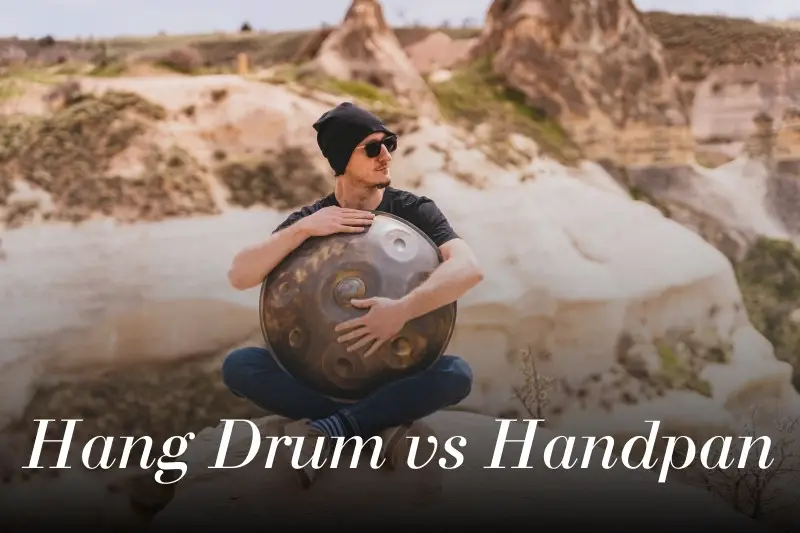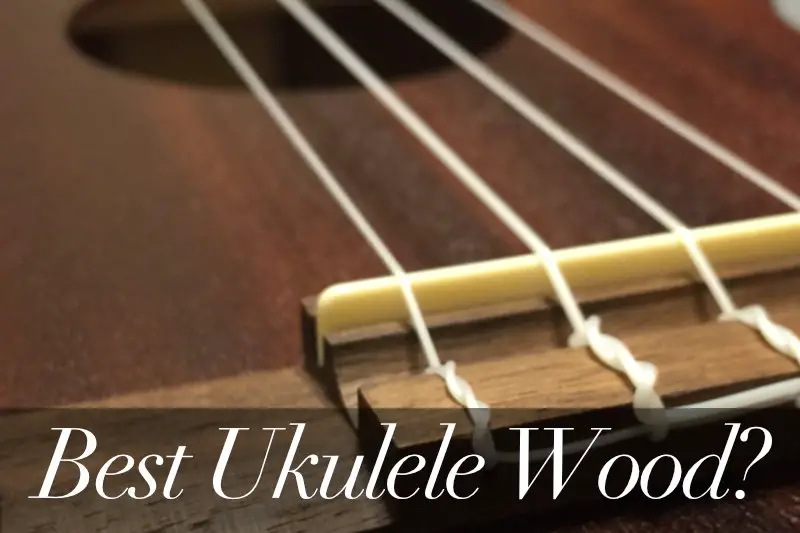A new instrument that sometimes requires a waiting list to own often carries a high price tag, and goes by a different name depending on who you ask, this is the handpan. Since the first handpan was created by a company called Hang, most people refer to handpans in general as Hang Drums. But, is there a difference in the Hang Drum vs handpan debate? Let’s take a look.
The Origins of the Term Handpan
Hang Drum actually turns out to be more of a generic term for modern handpans. This is simply because the only handpan makers for a long time were the company called Hang. The founding company, PANArt, began making Hangs in 2000. Since then, other manufacturers began producing handpans in various tunings and designs.
PANArt trademarked the name Hang, and due to the legality of the brand name, PANArt is the only company that can call its instrument a Hang. So, new manufacturers have adopted the term Handpan or Handpan drum. This is now the accepted name for the new instrument.
Some of the articles on our site contain affiliate links. We're careful about what we review and recommend. As an Amazon Associate, we may earn something small from qualifying purchases. Thanks for the support!
The term handpan can be traced back to a post by instrument builder Kyle Cox from Pantheon Steel on October 16th 2007. He published the post playing the prototype of the Halo model where he coined the term handpan, as it was similar to the design first introduced by PANArt’s Hang years earlier.
Who Made the First Handpan?
The original Hang began in Bern, Switzerland. PANArt Hangbau AG, founded by Swiss couple Felix Rohner and Sabina Schärer, is the company that first created and produced the Hang drum years before other builders entered the market.
The inventors refer to their instrument as a Hang and not so much a Hang drum. The reason being is that PANArt does not classify the instrument as a drum, like congas, bongos and so forth. The Hang is a tuned instrument. And, due to its light construction, it’s not meant to be hit aggressively by either hands, sticks, or mallets.
Rohner and Schärer took the design of the steel pan drum by turning the steel pan inside out into a convex position. Here is when the Hang was born and subsequently the handpan instrument. All the notes circle on the body are sensitive to light touches.
In 2001, the first-generation Hang became available to the public through the PANArt company. Its first presentation was at the Musikmesse in Frankfurt, Germany. It became an instant hit with its hauntingly sonorous and rich tones.
The Hang for inventors Rohner and Schärer is seen more as a piece of art than a commodity. They choose to not mass-produce the instrument and make a limited amount each year by hand, selling for thousands of dollars.
There was a process to acquire the Hang, which involved clients submitting a letter on why they wished to buy the instrument. PANArt even turned people away from their factory without an appointment. Rohner and Schärer discontinued the production of Hangs in 2013 as a way to maintain the instruments’ rarity and mystique. Luckily, there are several companies producing handpans that bring this unique instrument to a wider market.
How a Handpan Works
As mentioned earlier, the Handpan took inspiration and follows a similar design concept to the Trinidadian steel pan drum. The handpan is a melodic percussion instrument classified as a struck idiophone according to the Hornbostel-Sachs classification system. Struck idiophone instruments create a sound by vibrating themselves. Also, Handpans can act as a friction idiophone, where sliding the hands across the surface produces a shaker-like sound.
Playing a handpan
To play a handpan, the player needs to rest the instrument on their lap and create sounds by striking lightly the top indented shell with hands or fingers. Due to the construction of handpan drums, the sounds are lighter and warmer compared to steel pan drums.
The tone fields each have a tuned note laid out in a tone circle from low to high, where the player can move up and down the scale using both their left and right hands. The Ding at the top of the shell sounds similar to a bell or harmonically tuned steel pan.
Each tone field produces a series of overtones tuned to an octave above the fundamental pitch, together with a fifth above the octave.
The bottom shell of a handpan where the Gu opening is located produces the resonance from the struck tone fields. The resonance is called a Helmholtz resonance or wind throb, which is the phenomenon when air resonates within a cavity.
Similar instruments that use the same resonance system are the ocarina and the West African djembe. The Gu in later generations can be partially blocked by either the hand or legs to create sympathetic D2. This introduces more subtleties to the sound.
Handpan scales
Handpans come tuned in a variety of scales. The various models available come in many scale varieties and can be daunting to buyers due to the steep price tag.
The main scale types are pentatonic scales, diatonic scales, and hexatonic (6-note) scales. Some manufacturers make chromatic handpans for experienced musicians to utilize all 12 chromatic notes. However, these are request orders and are seldom advertised.
Price of a Handpan
If you haven’t figured it out already, the handpan is an expensive piece of gear. To make it worse, the wait times to acquire one can be well over a year due to high demand. It’s getting easier to get hold of one these days, but it can still be a challenge.
As handpans are time-consuming and intricate to make, there is a limited supply in the marketplace. Hang founders Rohner and Schärer have stated they wish to keep their instruments away from mass production and view their creation as artwork, or sound sculpture, rather than an instrument.
Standard handpans sell for between $1000 and $2500, which is considered a reasonable price. Some of the higher prices for the best handpans can be $4000 and above. The best Hang drums can go for over $10,000, though these prices are rare.
The handpan family has several members consisting of various designs that include:
- Hang drums
- Tank drums
- Space drums
- Steel slit tongue drums
The Shamanic shop produces their tongue handpan called the Rav Pan. These instruments are at a lower price than other brands as well as being available for immediate purchase at around $1150.
Pantheon steel is an American based company producing a range of handpans at different quality levels and prices. Their Halo and Halo+ models are the most popular handpans, precisely tuned and priced at $3500.
Handpans in History
In the world of musical instruments, handpans are one of the youngest instruments in existence. Yet, the instruments that inspired their creation go back many decades. We don’t have to look far to the closest cousin of the UFO-shaped instrument – the Caribbean steel pan.
The steel pan originated in Trinidad and Tobago around the mid-1940s and is a chromatically tuned percussion instrument made from industrial steel barrels and played with mallets. The handpan can be seen as a related cousin of the steel pan, with the dome shape and tone fields almost an inversion of the steel pan drum head.
PANArt and the Development of the Hang
In 2000, the PANArt company began work on a prototype of an instrument that took the sound of the steel pan drum and engineered it to be played by using one’s hands. The inspiration came from Reto Weber, a Swiss jazz steel pan performer who, after traveling to India, wanted a steel pan drum that could be played with hands modeled on the Indian ghatam (clay drum).
The producers chose the name Hang (pronounced hung), with the double meaning “hand” or “hillside” in the Bernese German dialect. The material used to build the Hang consists of nitride stainless steel fashioned into sheets to produce two half-shells. Each half-shell is glued together leaving a hollow convex shape with a top center note or “Ding”. Encircling the ding are seven or eight indentations called “tone fields” on the surface of the instrument. The tone fields are hand hammered into various thicknesses, similar to the traditional steel pan drum.
The Hang hits the market
The first generation of Hang instruments entered the market between 2001 and 2005, ranging from around 45 different models. PANArt decided to tune the instrument using scale systems that occur in non-western musical traditions, such as the Arabic Hijaz scales, Zhi Dao, Japanese Ake Bono scale, Mixolydian mode, and the Aeolian mode. The Hang family has seven or eight-note tone field models, and in 2005, PANArt produced the “Low Hang” with lower tunes pitches compared to other models.
From 2006, the second-generation Hang received some modifications and experimented with other scale tuning variations. The surface received an annealed brass coating, including a brass ring, and around the instrument’s circumference.
Not long after the second-generation Hang, PANArt launched the Integral Hang in 2008. Some of the modifications included adjusting the Gu hole to improve tuning, and the Dingo receiving a textured brass design. The Integral Hang has one scale tuning with seven tone fields, with notes D3, A3, Bb3, C4, D4, E4, F4, and A4.
Hang Drum vs Handpan: Final thoughts
For over 20 years, the handpan developed into a generic term for the unique UFO-shaped percussion instrument. The original Hang by PANArt inspired the development of a brand-new instrument for the 21st century.
The sonic uniqueness of the handpan has captured the creative spirit of people all over the world. Its hypnotic sound not only enthralls listeners and players but calms and even heals individuals. The handpan has secured its place as a vital tool in exploring new sounds and human experiences.




